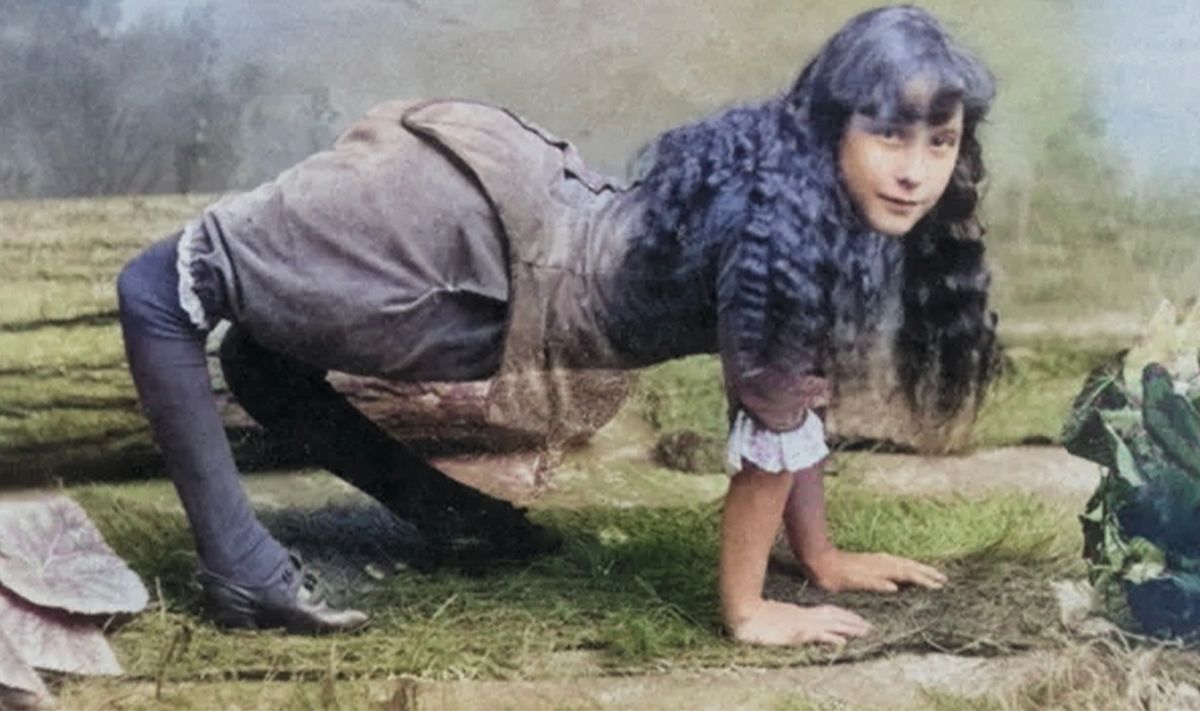
Ella Harper, known as the "Camel Girl," was a unique figure in the late 19th century. Born with a rare orthopedic condition called congenital genu recurvatum, her knees bent backward, giving her a camel-like appearance. This unusual trait made her a star in W. H. Harris's Nickel Plate Circus, where she captivated audiences with her extraordinary ability to walk on all fours. Despite her fame, Ella chose a life away from the spotlight, leaving behind a legacy shrouded in mystery. What happened to Ella Harper after her circus days? Why did she leave show business? Let's dive into 37 intriguing facts about this enigmatic woman.
Key Takeaways:
- Ella Harper, the "Camel Girl," overcame physical challenges to become a circus sensation, inspiring discussions about disability and human diversity in history and culture.
- Despite facing rare physical conditions, Ella Harper's resilience and adaptability turned her uniqueness into strength, leaving a lasting impact on popular culture and challenging societal expectations.
Who Was Ella Harper?
Ella Harper, known as the "Camel Girl," was a unique figure in 19th-century America. Her life and career were marked by her rare physical condition and her time in the circus.
- Born in 1870, Ella Harper had a rare orthopedic condition called congenital genu recurvatum, which caused her knees to bend backward.
- Due to this condition, she found it easier to walk on all fours, which led to her nickname, the "Camel Girl."
- Ella's condition was extremely rare, making her a subject of medical curiosity and public fascination.
- She began her career in the circus at a young age, performing with W. H. Harris's Nickel Plate Circus.
- Her unique ability to walk on all fours made her a popular attraction, drawing large crowds wherever she performed.
Life in the Circus
Ella's time in the circus brought her both fame and financial stability. Her performances were a spectacle that captivated audiences.
- In 1886, Ella Harper was featured on the cover of the Nickel Plate Circus program, highlighting her as the main attraction.
- She earned a substantial income for her performances, reportedly making $200 a week, a significant amount at the time.
- Ella's act involved walking on all fours, mimicking the gait of a camel, which fascinated and amazed spectators.
- The circus promoted her as "the most wonderful freak of nature since the creation of the world."
- Despite the challenges of her condition, Ella embraced her role in the circus, using it as a means to support herself and her family.
Personal Life and Legacy
Beyond her circus career, Ella Harper led a relatively private life. Her legacy, however, continues to intrigue and inspire.
- After leaving the circus in 1886, Ella expressed a desire to pursue education and lead a more conventional life.
- She attended school and sought to integrate into society, away from the public eye.
- Ella Harper married Robert Savely in 1905, and they lived a quiet life together in Nashville, Tennessee.
- The couple adopted a daughter, but sadly, she passed away in infancy.
- Ella and Robert later adopted a son, who they raised together.
Medical and Historical Significance
Ella Harper's condition and her life story hold significant medical and historical interest.
- Congenital genu recurvatum, Ella's condition, is extremely rare, with few documented cases in medical history.
- Her life provides valuable insights into how individuals with rare conditions were perceived and treated in the 19th century.
- Ella's story highlights the intersection of medical curiosity and entertainment in the era of traveling circuses.
- Her ability to adapt and thrive despite her condition is a testament to her resilience and determination.
- Ella Harper's life challenges modern perceptions of disability and showcases the diverse ways people have navigated physical differences throughout history.
The End of an Era
Ella Harper's later years were marked by a retreat from the public eye, but her story remains a fascinating chapter in the history of circus performers.
- Ella Harper passed away on December 19, 1921, at the age of 51.
- She was buried in Spring Hill Cemetery in Nashville, Tennessee, alongside her husband and adopted children.
- Her grave marker is simple, bearing only her name and dates of birth and death.
- Despite her brief time in the spotlight, Ella's story has endured, capturing the imagination of historians and circus enthusiasts alike.
- Her life is a poignant reminder of the human stories behind the spectacles of the circus world.
Cultural Impact
Ella Harper's unique story has left a lasting impact on popular culture and continues to be a subject of interest.
- Her life has been the subject of various articles, books, and documentaries exploring the lives of circus performers.
- Ella's story has inspired fictional characters in literature and film, reflecting the enduring fascination with her unique condition.
- She is often cited in discussions about the history of disability and the representation of people with physical differences in media.
- Ella Harper's legacy challenges stereotypes and encourages a more nuanced understanding of disability and human diversity.
- Her story serves as an important historical example of how society's perceptions of physical differences have evolved over time.
Rediscovery and Modern Interest
In recent years, there has been a renewed interest in Ella Harper's life and legacy, driven by both academic research and popular media.
- Historians and researchers have uncovered new details about her life, shedding light on her experiences and contributions.
- Modern technology has allowed for the digitization and preservation of historical documents related to Ella Harper, making her story more accessible.
- Social media and online platforms have played a significant role in bringing Ella's story to a wider audience.
- Her life has been featured in exhibitions and museum displays focused on the history of circus performers and medical anomalies.
- Ella Harper's story continues to inspire discussions about the representation of disability in history and culture.
Final Thoughts on Ella Harper's Legacy
Ella Harper's life, though marked by challenges, is a testament to human resilience and adaptability. Her story continues to resonate with people today.
- Ella Harper's ability to turn her unique condition into a source of strength and livelihood is a powerful example of resilience.
- Her legacy encourages a deeper understanding of the diverse ways people have navigated physical differences and societal expectations throughout history.
Ella Harper's Legacy
Ella Harper's story is a testament to human resilience and the power of embracing one's uniqueness. Born with a rare orthopedic condition, Ella didn't let it define her. Instead, she turned it into a career, becoming a celebrated performer known as the "Camel Girl." Her life, though challenging, was filled with moments of triumph and inspiration.
Ella's journey reminds us that everyone has the potential to overcome obstacles and make a mark on the world. Her legacy continues to inspire those who learn about her, showing that determination and courage can lead to extraordinary achievements.
By remembering Ella Harper, we honor not just her struggles but also her incredible spirit. Her story encourages us to look beyond physical differences and appreciate the strength within. Ella's life is a powerful reminder that true beauty and strength come from within.
Frequently Asked Questions
Was this page helpful?
Our commitment to delivering trustworthy and engaging content is at the heart of what we do. Each fact on our site is contributed by real users like you, bringing a wealth of diverse insights and information. To ensure the highest standards of accuracy and reliability, our dedicated editors meticulously review each submission. This process guarantees that the facts we share are not only fascinating but also credible. Trust in our commitment to quality and authenticity as you explore and learn with us.


